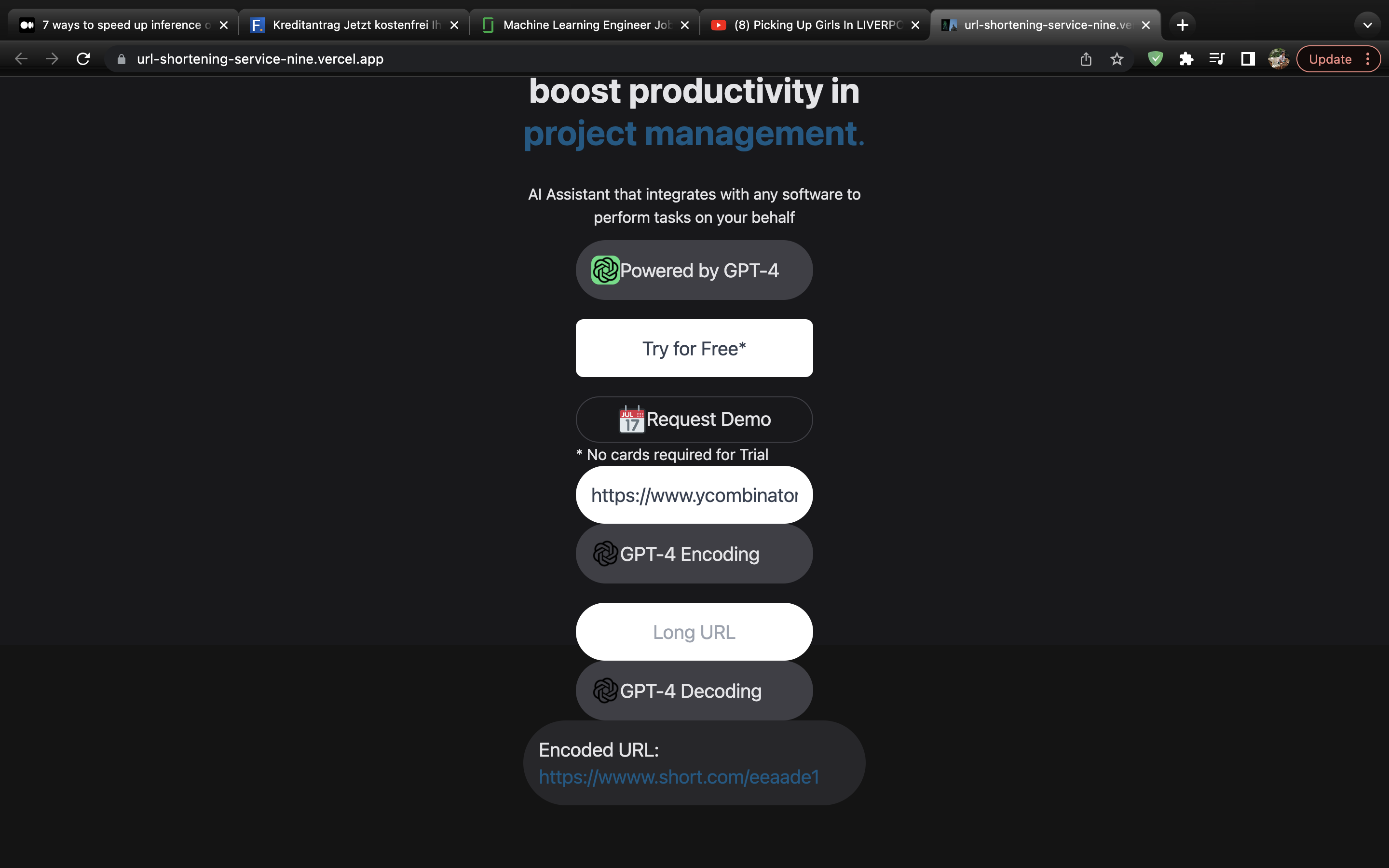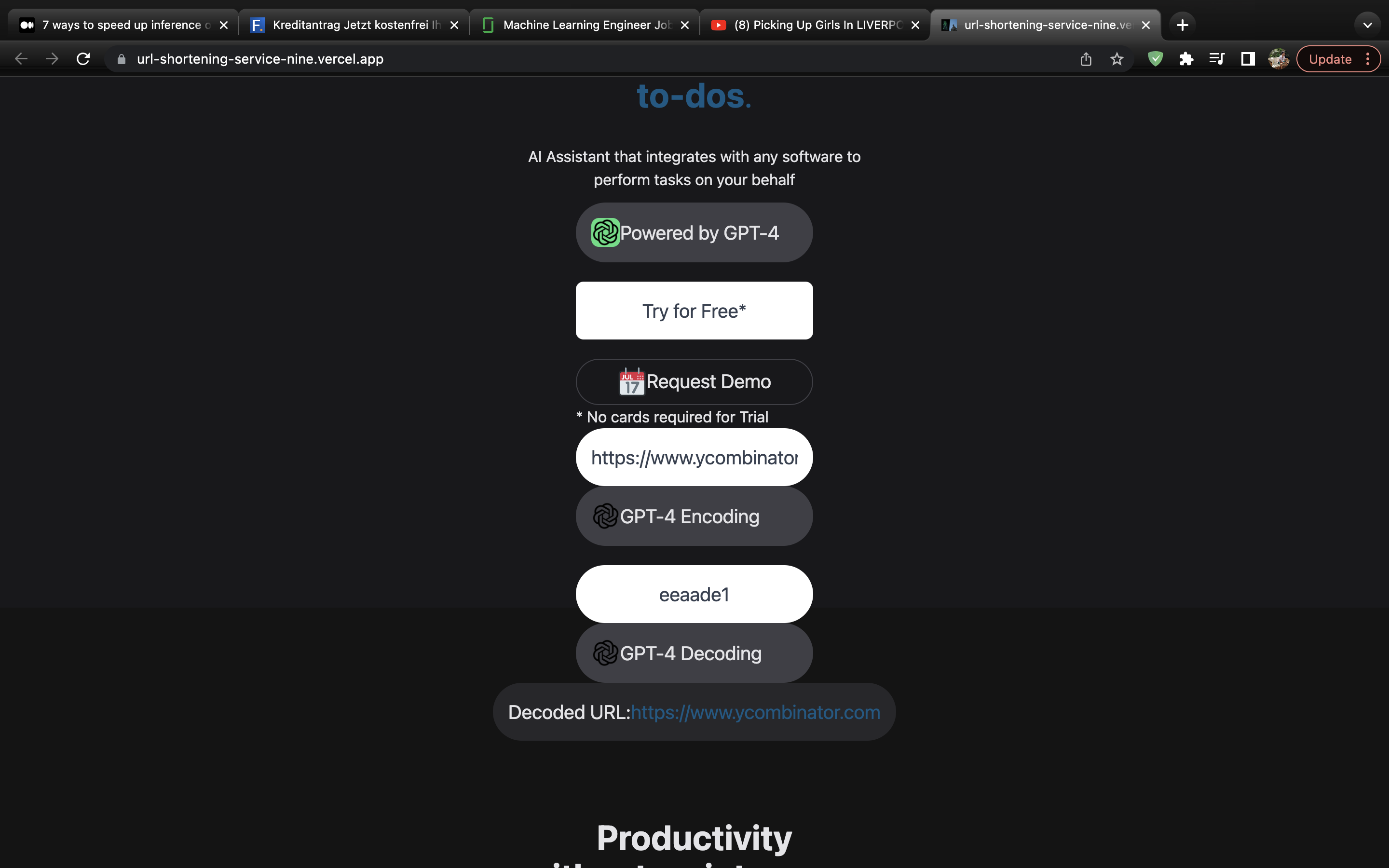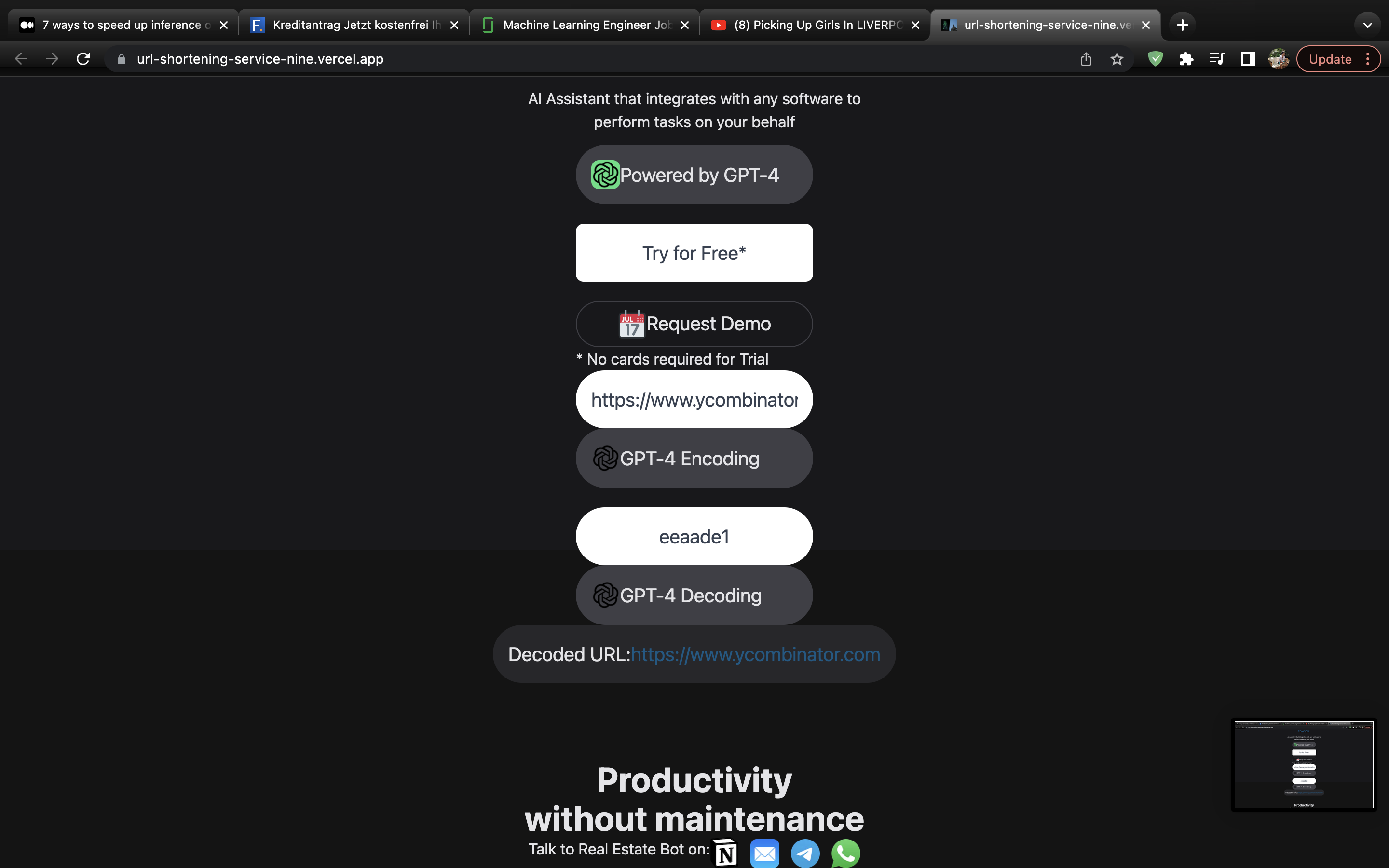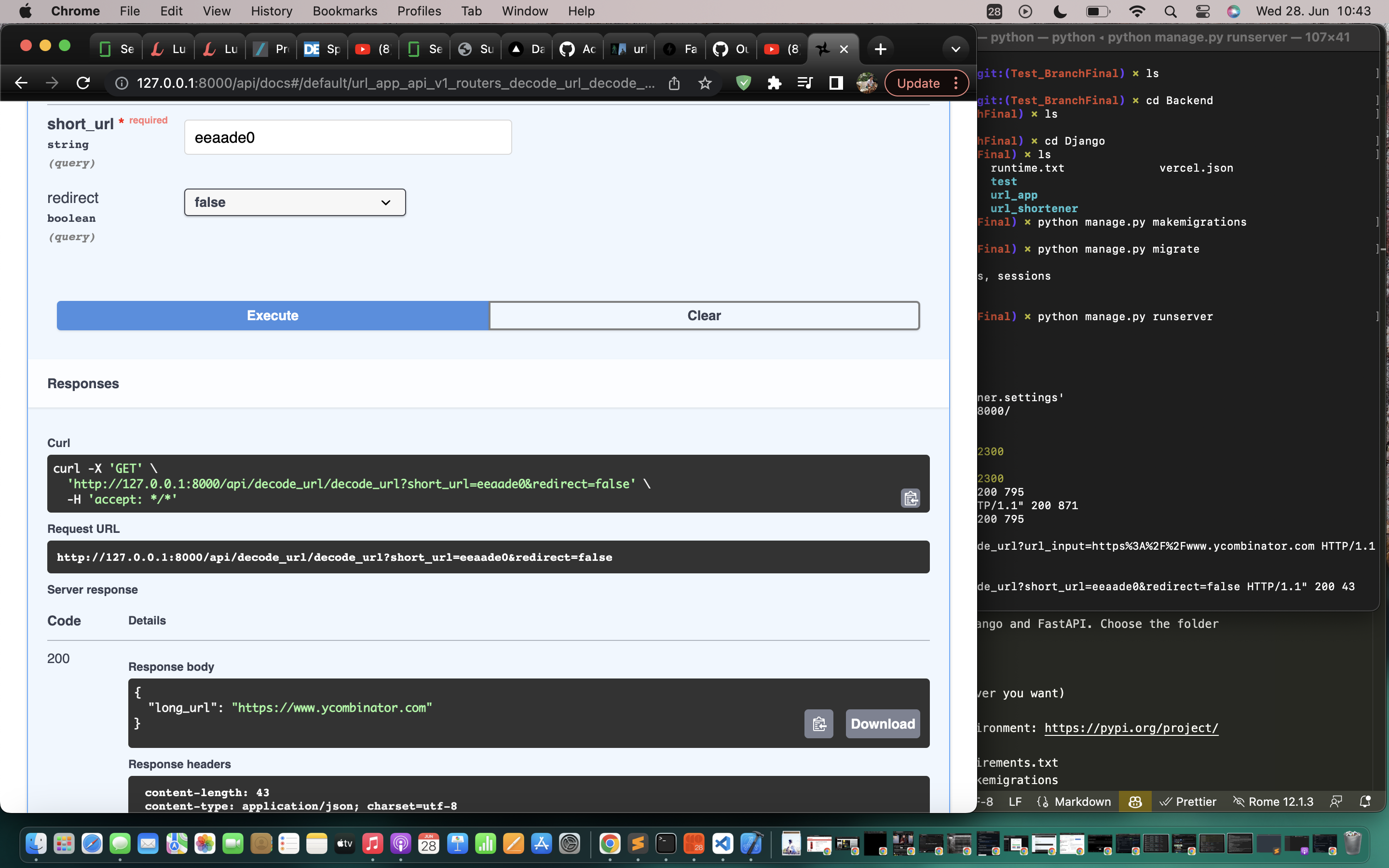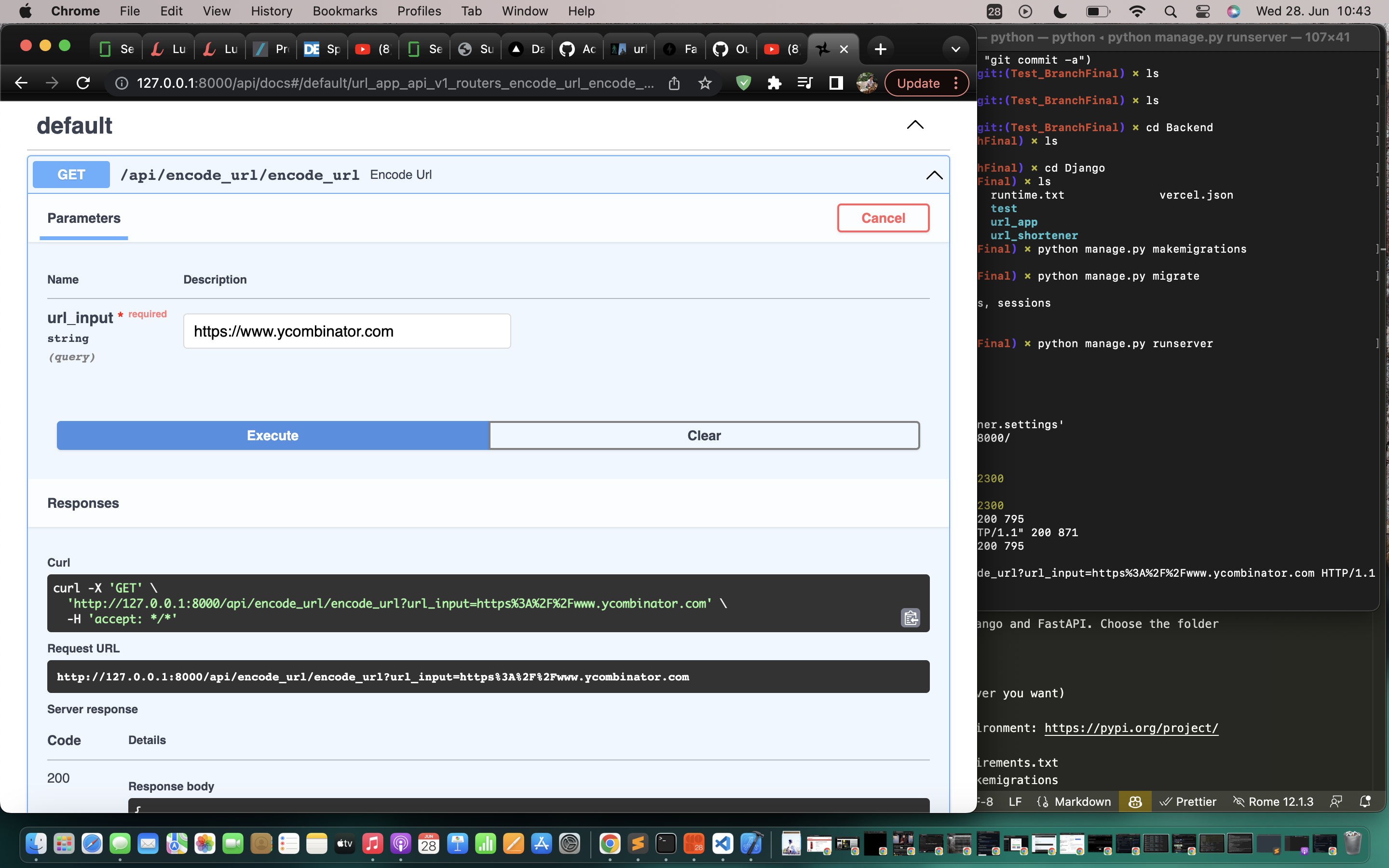This project is a fullstack app with NextJS frontend and authentication implemented using Google Firebase. Below I shared the screenshot showcasing the design and then the .gif which demonstrates a live screenshare as well as the .mov movie QuickPlay video recording can also be downloaded. (Frontend/docs/Full_Demo.mov)
You can choose to run whichever backend you want: FastAPI or Django. I prefer Django because it has bigger support whereas FastAPI is faster if speed is needed. Both backends work equivalently.
The frontend is live at: https://url-shortening-service-1qcmlgxyq-oushesh.vercel.app/
The Backend is deployed also by hacking on vercel so I don't pay price for hosting.
FastAPI Backend:
with MongoDB database for production can be accessed from here (optional):
https://github.com/Oushesh/url-shortening_service_fastapi_mongodb
You can build the git and run locally and you will get the output.
The Fast API Backend connected correctly with Frontend in NEXTJS is under the folder FastAPI here deployed at:
* https://url-shortening-service-ol9j.vercel.app/docs#/
You will see the API on Swagger UI. This api is connected to the
frontend.
Django Backend: The Django Backend uses Ninja API with routers and schemas. It works similarly to the FastAPI.
Follow the instructions below and you can run the backend Django locally and either test it on Swagger UI or with the frontend directly.
For Django run the instructions below and you will can test it on the browser at:
http://127.0.0.1:8000/api/ See the screenshot below:
The frontend was entirely built using Tailwindcss, heroicons react-icons and Nextjs
- FRONTEND:
cd Frontend:
- yarn run build
- yarn run start
- for quick dev changes and seeing live results: yarn run dev
Backend is built both on Django and FastAPI. Choose the folder you want.
- Backend:
cd Backend (choose whichever you want)
-
Django
- Create a virtualenvironment: https://pypi.org/project/virtualenvwrapper/
- pip install -r requirements.txt
- python manage.py makemigrations
- python manage.py migrate
- python manage.py runserver
-
FastAPI:
-
Create a virtualenvironment: https://pypi.org/project/virtualenvwrapper/
-
pip install -r requirements.txt
-
make sure to install uvicorn as well
-
uvicorn main:app --reload
-
- git clone https://github.com/Oushesh/url_shortening_service.git
- Backend:
- Django: cd Backend/Django
- docker compose up -- This will build the docker file and runs the backend locally. -- This docker is for dev purposes usually my strategy of deploying is to have one Docker for dev and another one for prod. It speeds up development processs.
- FastAPI: cd Backend/
- Django: cd Backend/Django
part to increase hash frequency with a counter to avoid collision when the Hash MD5 is
CI/CD pipeline
- Django:
- FastAPI:
- docker compose up for backend
- Deployment on vercel for both frontend and backend. Vercel is free.
* URL Shortening Logic (Encoding):
The hashing I went for is MD5. People can use others like Base62
Encoding etc...
The mD5 only uses 7 characters and the encoding produces 128bit characters.
To prevent collisoin we save the results in dictionary either in redis postgresql database, MongoDB, Supabase, etc...
The advantages is that this approach MD5 saves some space. Space
(storage) is more expensive than compute for these kind of applications
unless you are doing ML like which requires GPU compute.
To solve the collision problem we will use a Counter from python library
itertools. This will guarantee deduplication since the counter always
increases thus is unique. Appending the counter value at the end of the
md5 encoded string ensures no 2 strings are the same.
Also all encoded strings are saved in memory (cache) and checked before encoding and decoding. (no duplicate entries).
For scalablity just use posgresql or redis database. During scaling we can use multiserver approach and also to ensure that in the case one server fails then another server (the counter) could have the same number. So instead every server has a range then can count upto and thus if one fails we ensure no overlap.
I did not bother adding tests for the frontend for now. For the backend:
-
FastAPI: cd Backend/FastAPI: pytest
-
Django: cd Backend/Django: pytest
Each test consists of 10-11 urls to be encoded and recovered to its original one.
- main.yml github action runs the tests evoked by pytest when a different user or anyone makes a branch and commits to main.
Test-run include: .github/workflow/main.yml (github actions) and git guardian secrets.
All code is mine. The frontend I built for another project with google firebase for authentication:
Both the encoding ones and decodings in FastAPI as well as Django are named: encode_url and decode_url instead of encode and decode.
